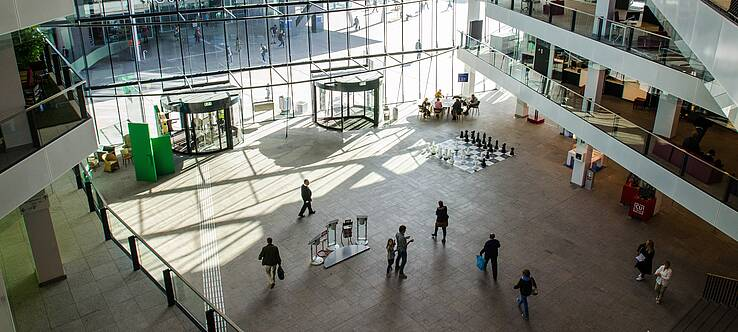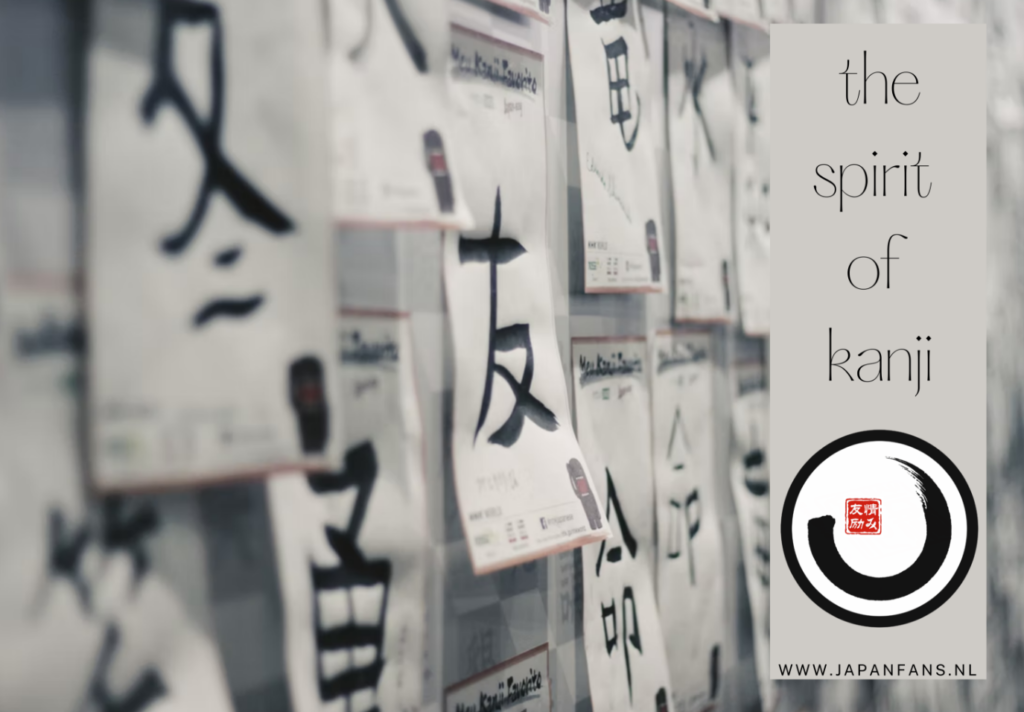From 4 February to 1 March 2023, the Japan Fans present posters of The Spirit of Kanji at the Utrecht Stadskantoor. Will you drop by to take a look?

Japan Fans is a Utrecht-based foundation and group of friends consisting of people with an interest in the Japanese language and culture. Among other things, the Japan Fans organise free Japanese language lessons, creative workshops, lectures, concerts, and training in Japanese martial arts. Through their socially engaged initiatives – such as making sushi for the homeless, folding origami in hospitals and playing Ghibli music in care homes – the Japan Fans actively engage with the residents of Utrecht. Their longer-term goal is to open a Japanese Cultural Centre, as a central hub for all their activities.
Under the title The Spirit of Kanji, the Japan Fans have been doing artistic research for over a year. To do so, they interview Utrecht inhabitants with Asian roots who have “something” to do with kanji, the original Chinese characters. They ask this target group about their experiences in the Dom city and from these conversations they choose a key word. That word is then converted into calligraphy, which the participants get to keep.
The idea for this project came about during a cooking workshop at Neighbourhood House Rosa in Utrecht Lombok. Some of the Japanese students were cooking together with two elderly Chinese ladies. They could not understand each other; everything went by hand and foot. This was going fine, until someone wanted to communicate a slightly more abstract concept. After a few desperate glances, one of the Japan Fans picked up a piece of paper and scribbled something on it. The Chinese ladies recognised it immediately.
As such, it was not just a drawing, it was a kanji, a writing character from one of the three Japanese scripts, adopted from China. A kanji is logographic, meaning that each character expresses a concept. This allows people to communicate with each other without speaking each other’s language. There are dozens of different languages and dialects in China alone, but anyone who has been to school can read the newspaper all over China, Taiwan and Singapore. Separate characters can also be read by people in South Korea, Vietnam and Japan. They are like emoticons from (East) Asian antiquity.
Most participants come from the region often referred to as “East Asia”: China, Japan, North Korea, South Korea, Mongolia and Taiwan. Geographically, this region covers 6,640,000 km², or 15% of the Asian continent. Culturally, East Asia includes societies that are in the Chinese cultural sphere of influence, in the sense that they are influenced by the classical Chinese language. A cultural affinity in language, political philosophy and religion overlaps with the official geographical part of East Asia, but also extends beyond it. Participants in The Spirit of Kanji includes Utrecht inhabitants from Vietnam and Singapore, and someone who describes himself as having “mixed Asian and Arabic roots” – after the two writing cultures between which he grew up.
The word “spirit” in the title The Spirit of Kanji refers to the connecting power of these originally Chinese characters. The calligraphies and interviews give a glimpse into the lives of Utrecht inhabitants from all sorts of different Asian backgrounds. What brought them here and how do they like it in Utrecht? Find out at the exhibition The Power of Kanji, from 4 February to 1 March on the 1st floor of Utrecht’s City Office (next to Utrecht Central Station).

